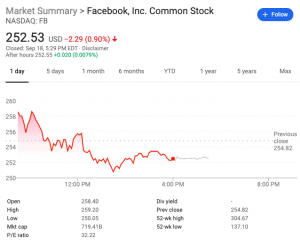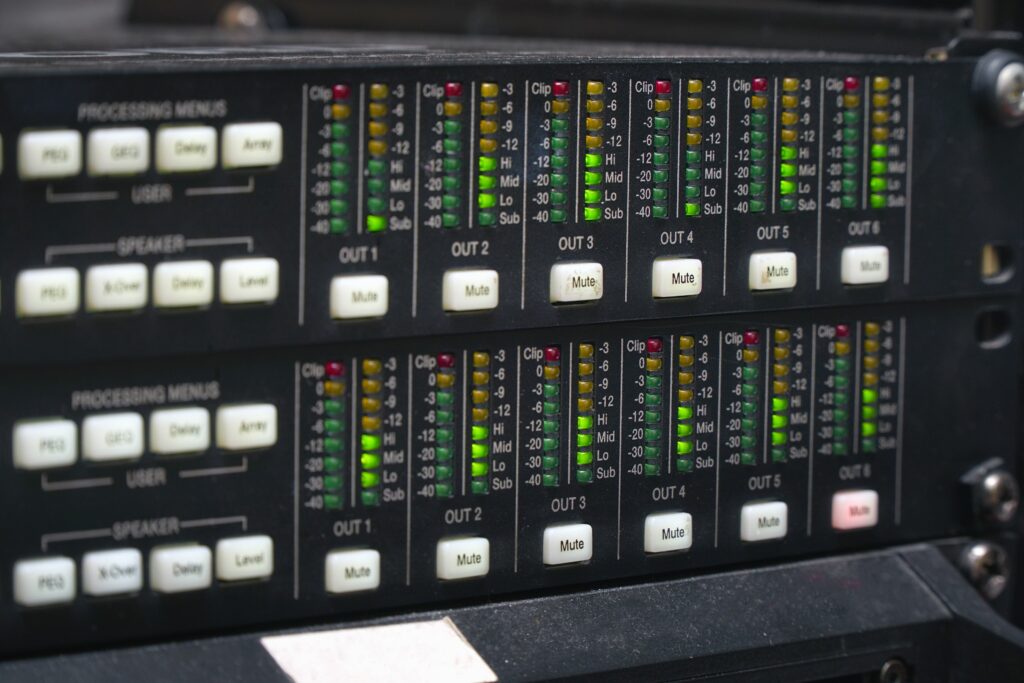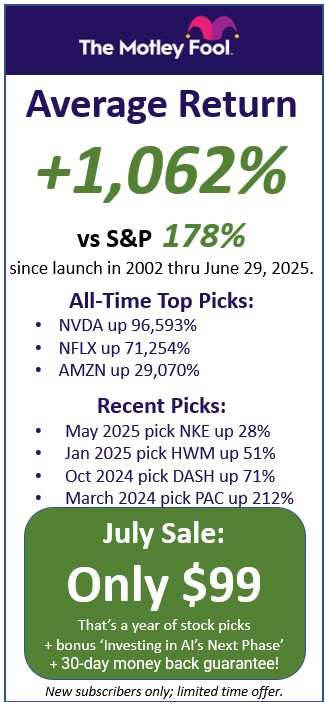At Wall Street Survivor, we say no to unnecessary financial jargon. Stock market terminology is made out to be way too complicated, and we understand how frustrating it can be for beginning investors.
When I was a beginner investor, I would spend hours and hours reading through articles on investing websites and watching the latest stock market news from sources like CNBC and Bloomberg. But I would always come across a really discouraging issue: I was spending so much time trying to learn, but I didn’t understand 90% of the terms I was hearing! It can be so discouraging and demotivating to put so much effort into learning about investing, only to feel like you’re still miles behind because you don’t understand the vocabulary.
And that’s why we’re here today: I’m going to count down 10 of the most important stock market terms so that by the end of reading this, you will be able to keep up with market news like pros. Let’s get started!
10. Ticker Symbol
For the 10th place spot in our countdown…
we have ticker symbol.
A stock’s ticker symbol is a set of letters, usually an abbreviation for the stock’s name, that is used to identify that particular stock in the stock market. Ticker symbols usually range from one to five letters in length. For example, Facebook’s ticker symbol is FB, and Microsoft’s ticker symbol is MSFT. Some companies even have multiple classes of shares; for example, Alphabet, the owner of Google, has two share classes available to the public: one with voting rights (GOOGL), and one without voting rights (GOOG).

Can you spot the ticker symbol?
9. S&P 500
This isn’t alphabet soup…
…it’s stock market terminology!
The S&P 500, or the Standard & Poor’s 500 Index, is an index consisting of the 500 largest publicly traded companies in the U.S. by market cap. The companies in the index are all weighted depending on how large they are, and these weights are combined to produce a number which indicates the performance of the index. The companies with the highest market cap affect this number the most, while the smallest companies affect it the least.
The S&P 500 is widely used as an indicator of the performance of the stock market as a whole, since it includes so many stocks in so many different sectors. Often times when people talk about the market performing well or not-so-well, they’re using the S&P 500 or another popular index like the Dow Jones Industrial Average as their benchmark.
8. Bull & Bear

A field trip to the world’s least exotic zoo?
Nope, still talking about stock market vocab…
When it comes to investing, the terms “bull” and “bear” can be used to describe how the market, or a particular subsection of the market, is performing, or to describe investors’ feelings about the market or about certain stocks in particular.
A “bull market” is a market in which stocks are gaining value overall. A “bear market” is a market in which stocks are depreciating in value. To be specific, a bear market is defined as a market in which stocks have fallen 20% from recent highs. Bear markets are often accompanied by pessimistic investors, a slow economy, and a rise in unemployment.
“Bull” and “bear” can also be used to describe how an investor feels about the market or a particular stock. If an investor is “bullish” on a stock, he or she believes that the stock will rise, while a “bearish” investor thinks that the stock will fall.
Can you guess how the terms “bull” and “bear” came to signify rises and drops in the stock market? The most common belief is that they actually come from the way bulls and bears defend themselves from predators and hunt prey. Bulls thrust upwards with their horns, which is why bulls are used to signify upward trends. Bears slash downwards with their paws, so they are used as a symbol for downward movements in the market. So there’s your fun fact for the day!
7. Market Cap
Snap backs and market caps…
…can you guess which one is a stock market term?
Market capitalization, or “market cap”, refers to a company’s overall market value at any given point in time. The word “market” indicates that we will use the “market price” of the company, or its current stock price, in the calculation. The word “capitalization” is a term that can be used to describe the size of a company.
Market capitalization is calculated by multiplying the current price of the company’s stock by the number of outstanding shares. Outstanding shares are shares of the stock that are currently held by investors.
For example, if a company has issued 1 million total shares of stock, and each share is worth $5, then the market cap of the company is $5 million.
The market cap of a company changes constantly, since the price of its stock is always fluctuating. Market cap can also change when the number of outstanding shares changes, such as when a company issues more shares of stock or even buys back its own shares, but that doesn’t happen very often, which is why the stock price is the biggest factor determining changes in market cap.
There are three main classifications of company sizes by market cap:
…large-cap, mid-cap, and small-cap.
Large-cap companies have a market cap between $10 billion and $200 billion. Mid-cap companies are $2 billion to $10 billion, and the small-caps are $300 million to $2 billion.
There are technically two other market cap classifications that are home to some important outliers: nano-cap and mega-cap. Nano-cap companies are usually extremely risky investments that trade in the form of penny stocks. Mega-cap companies are huge companies with a market cap of $200 billion or higher. These companies are often the leaders in their particular industries; think Apple and Amazon.
6. Volume

It’s getting pretty loud in here with all this stock market lingo!
The volume of a stock is pretty much what it sounds like: the number of shares of the stock that change hands in a given time period. Volume is an important statistic for investors and traders alike, but it’s especially important for stock traders who use technical analysis, which we will talk about at the end of the video.
It’s important to pay attention to the volume of a stock because you want to make sure that it will be possible to buy or sell a share of the stock if you so choose. For example, blue chip stocks are very high-volume; millions of people buy and sell shares of them every day. So if you want to buy or sell a share of a blue chip stock, you can pretty much guarantee that there will be someone on the other end of the transaction willing to buy or sell it. But if you were considering investing in a smaller stock with a low trading volume, there’s a higher chance that you won’t be able to find someone to take the stock if you decide you want to sell it.
5. Stop-Loss
This stock market term just sounds scary.
A stop-loss order is essentially a safety net that can ensure that you don’t lose more than a certain amount of money if a stock you own starts dropping in price. When the stock price drops to your specified amount, it will trigger the stop-loss and automatically sell the stock. For example, if you buy a share of a stock at $100, and decide that you don’t want to lose more than 5% of your investment, you would set your stop-loss order at $95. If the stock price drops to $95, your brokerage will automatically sell the stock for you to prevent you from losing any more money.
Stop-losses can be very useful for locking in profits as well. Let’s say you’ve already made 10% from holding a stock and you want to keep making money without sacrificing all of those gains. You could set a stop loss at 5% less than the CURRENT stock price, which would ensure that at the very least, you will make 5% from your original investment – but hopefully the price will keep rising and you can reset your stop loss to lock in even more profits!
While stop-losses can be a very useful tool, they are not for everyone. If you are 100% committed to a stock and you know that you are going to hold onto it no matter what happens to the price, then a stop-loss will not be necessary. But if you are holding a stock that you’ve already made some gains on or you might lose some money on, and you want to make sure you can sell the stock if it drops to a certain price, then a stop-loss order is the perfect tool for you. That way, you can know the minimum amount of money you’ll gain or the maximum amount you’ll lose even while you’re at work or school!
4. P/E Ratio
Physical education ratio?? Middle school gym class flashbacks? Thankfully just another need to know piece of vocabulary.
The price-to-earnings ratio, or P/E ratio, is a very powerful tool that all kinds of investors use when deciding whether or not to invest in a certain security. The PE ratio is found by dividing the current stock price by the stock’s earnings per share (EPS). In essence, this ratio tells us how much money we can expect to invest in order to gain $1 of the company. If the company’s PE ratio is 10, then we would expect to invest $10 in order to receive a $1 share of the company’s earnings.
The PE ratio is a valuable tool when deciding whether a company is over- or undervalued, but it can also be tricky due to the way companies report their earnings. For example, if a company wants to impress investors next quarter by blowing their earnings expectations out of the water, they might underestimate this quarter’s earnings so that they can report a lot of growth next quarter. This is why it’s important to pay attention to both main methods of obtaining the PE ratio: the historic PE ratio, which is a fundamental metric you can find on many financial websites, and the forward-looking PE ratio, which is obtained from earnings reports and “guidance” calls from the higher-ups at publicly-traded companies. Want to really do some due diligence on your portfolio? You have the right to listen to quarterly earnings reports from any company you hold stock in! Just refer to your brokerage to find out how to listen in.
3. ETF
This one’s important
An ETF, or exchange-traded fund, is a security that is made up of a bunch of different securities, all bundled into one package. Many ETFs track an index or sector of the market. For example, one of the most popular ETFs to buy is one that tracks the performance of the S&P 500; if the S&P 500 gains 5% in a single day, then you gain 5% on your investment! You can also buy ETFs that track the technology sector, the financial sector, bonds, and many other things!
ETFs are essentially cheaper, more accessible versions of hedge funds. Rather than having to pay a lot of money to invest in a hedge fund that is very hard to buy and sell individual shares of, you can trade shares of ETFs on the stock market just like a regular stock. They are cheaper to buy, easier to trade, and involve much cheaper fees than mutual funds.
All in all, ETFs are a great way to achieve diversification and exposure to different parts of the market without spending too much money – rather than having to buy every individual stock in a given ETF, you can have a piece of every one at a fraction of the cost!
2. Blue Chips
This stock market term tastes great with salsa
Blue chip companies are generally large, well-known companies with strong track records of financial consistency. Think household names like Disney, Walmart, and Johnson & Johnson.
Blue chip stocks are essentially the polar opposite of penny stocks. Penny stocks are small, risky, and have little or no financial history. But blue chip stocks are large, less risky, and have a long history of performing well financially. Many investors with a lower risk tolerance will opt for blue chip stocks because of their reliability and consistent dividends. If you don’t know your risk tolerance, click below to watch Wall Street Survivor’s video on discovering your personal risk profile!
Remember when we talked about market cap? Well, I bet you can guess where blue chip stocks tend to land on the market cap spectrum! Blue chips are generally large- or mega-cap companies, but sometimes can even include mid-cap companies, assuming that they’re just as well-known and reliable as their larger counterparts.
Blue-chip companies are considered lower-risk, lower-reward stocks compared to their smaller and lesser-known counterparts in the realm of equities. If you’re looking to double your money in a short period of time on a risky bet, then blue chip stocks are not the right investment for you. Many investors use blue-chip stocks to anchor down their portfolios as a safe investment or just to take advantage of the dividends that many blue-chip companies offer.
Now, just because a company is considered a blue chip does NOT mean that it is a risk-free investment. Even some of the most trusted companies, such as Lehman Brothers and General Motors, have seen some devastating effects due to economic downturns. Even if you create a low-risk portfolio, it’s still important to follow one of the golden rules of investing: don’t invest any money you aren’t willing to lose.
1. Fundamental & Technical Analysis

& rocket science & quantum physics…
The differences between fundamental and technical analysis are extremely important for every beginner investor to understand because they will shape the way you approach every investment decision you make.
Fundamental and technical analysis are the two opposite schools of thought that govern an investor’s approach to determining future stock prices. They essentially outline the differences between investors and traders; these terms tend to be used interchangeably as if they are the same thing, but that is NOT the case. Investors and traders approach the market in COMPLETELY different ways, so it’s important to know where you stand on these views. So let’s jump right in!
Fundamental analysis…
…is the school of thought that INVESTORS use. This type of approach tries to find the *INTRINSIC VALUE* of a stock. Fundamental analysts pay attention to the “fundamentals” of a stock, such as the company’s financial statements and management, as well as overall macroeconomic conditions. These types of investors tend to hold stocks for long periods of time, because they believe they know the real price that the stock will eventually reach.
Technical analysis…
…is the school of thought that is used by TRADERS. It uses ONLY the price and the volume of a stock to determine trading strategies. Technical analysts do not take into account the fundamentals of a company, because they believe that these factors are already “priced in” to the stock. Traders aim to find patterns in historical prices, identifying times when a stock might break through a recent high point or low point, and using the momentum that a stock is gaining to determine when to buy. Traders using technical analysis tend to trade stocks within short periods of time, because they don’t try to find the real value of a stock; their goal is to make money predicting small movements in stock prices based off of historical patterns.
There is no “right answer” as to which school of thought is the best. Some people believe that technical analysis is pointless because the movements of the stock market are random, so it is impossible to make money trading. And some people believe that all the fundamentals are already priced into stocks, so fundamental analysis doesn’t make any sense. If you want to learn more about where these differences come from, feel free to look up Efficient Market Hypothesis! At the end of the day, every investor has to do their research and decide what approach is right for them. Here at Wall Street Survivor, we believe in preparing our investors for the long haul, and we realize that not every investor has the time to trade every day or every week, so we tend to focus more on fundamental analysis.
So there you have it!
Those are 10 of the most important terms every investor should know before they begin their journey into the stock market. Hopefully these were helpful, and make sure to check out the video at the top for more ways you can learn about how to start investing!
FIRST STEPS TO FINANCIAL SUCCESS:
At WallStreetSurvivor, we love with the stock market and we are obsessed with finding the best deals to help us all make more money. Here is our list of the BEST STOCK SERVICES to help you get start investing correctly:
1 - Get Up To $1,000 in FREE Stock with Robinhood! The fastest growing brokerage, Robinhood, just hit 10,000,000 accounts. Why? Because they DON'T charge commission AND they are giving away up to $1,000 in free stock when you open an account. CLICK HERE to learn more about Robinhood.
2 - Not Sure What Stocks to Buy? Get the BEST Stocks Picks! We subscribe to dozens of stock newsletters, and there is one that has outperformed all the rest for the last 5 years. This one service has an amazing average return of 74.63% on ALL of their stock picks the last 3 years. Their recent winners have been stocks like Shopify (SHOP) up 866%, Match Group (MTCH) up 549%, Paycom (PAYC) up 235%, and many others that have doubled in the last 3 years.
CLICK the image below go see their latest offer...

3 - Don't Pay Commission! Open a Real Brokerage Account and Trade Commission-Free. Here's the GREAT NEWS--the brokerage industry is very competitive right now and some brokers are offering FREE COMMISSIONS and other incentives to acquire new accounts. CLICK HERE to get commission-free trades. Or CLICK HERE to get a review of the Best Online Stock Brokers.
4 - Get the Best Stock Picking Newsletter of 2020 We subscribe to dozens of stock newsletters. Some of these newsletters are longer term investing, some are short term, and some are penny stocks. Find the best newsletter for your interests. So which stock newsletters are the best? Visit our review of the best stock newsletters.
5 - Is the Motley Fool a Good Source of Stock Picks? The Motley Fool is probably the best know stock newsletter service. Is it worth it? Read our full Motley Fool Review
